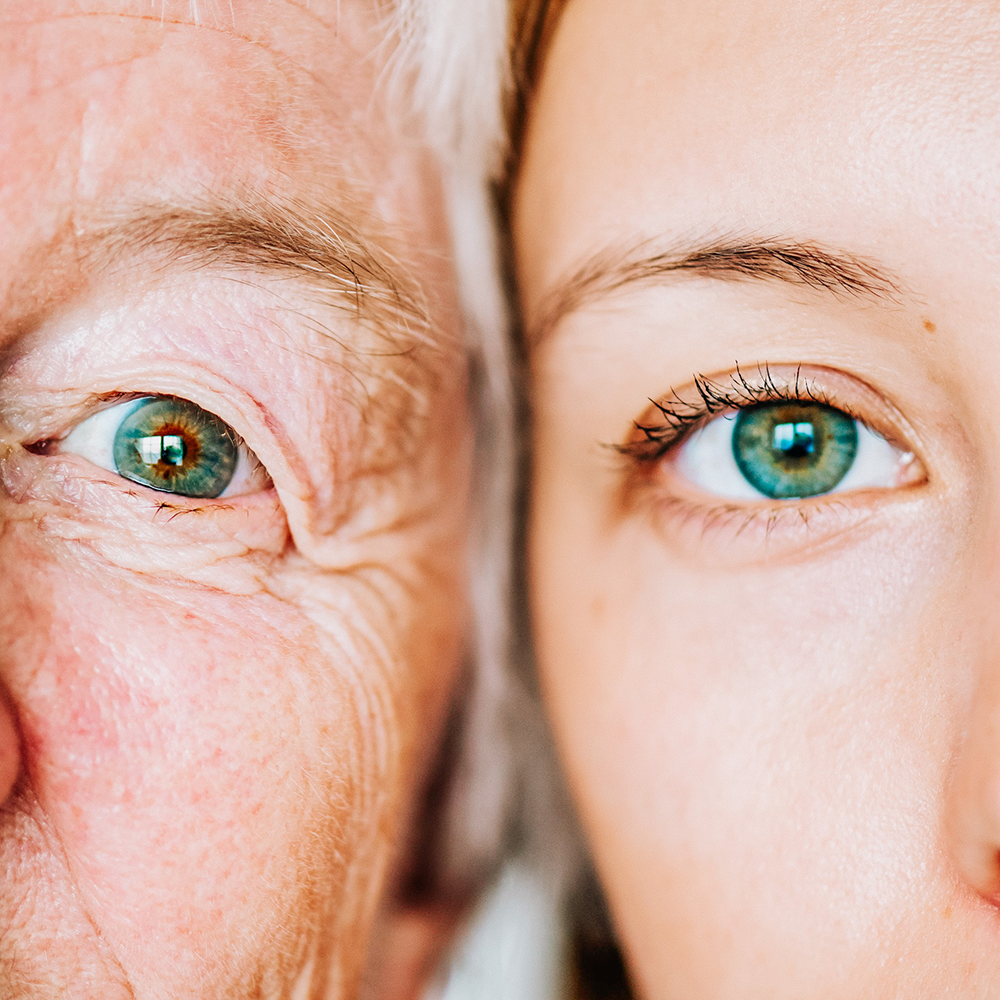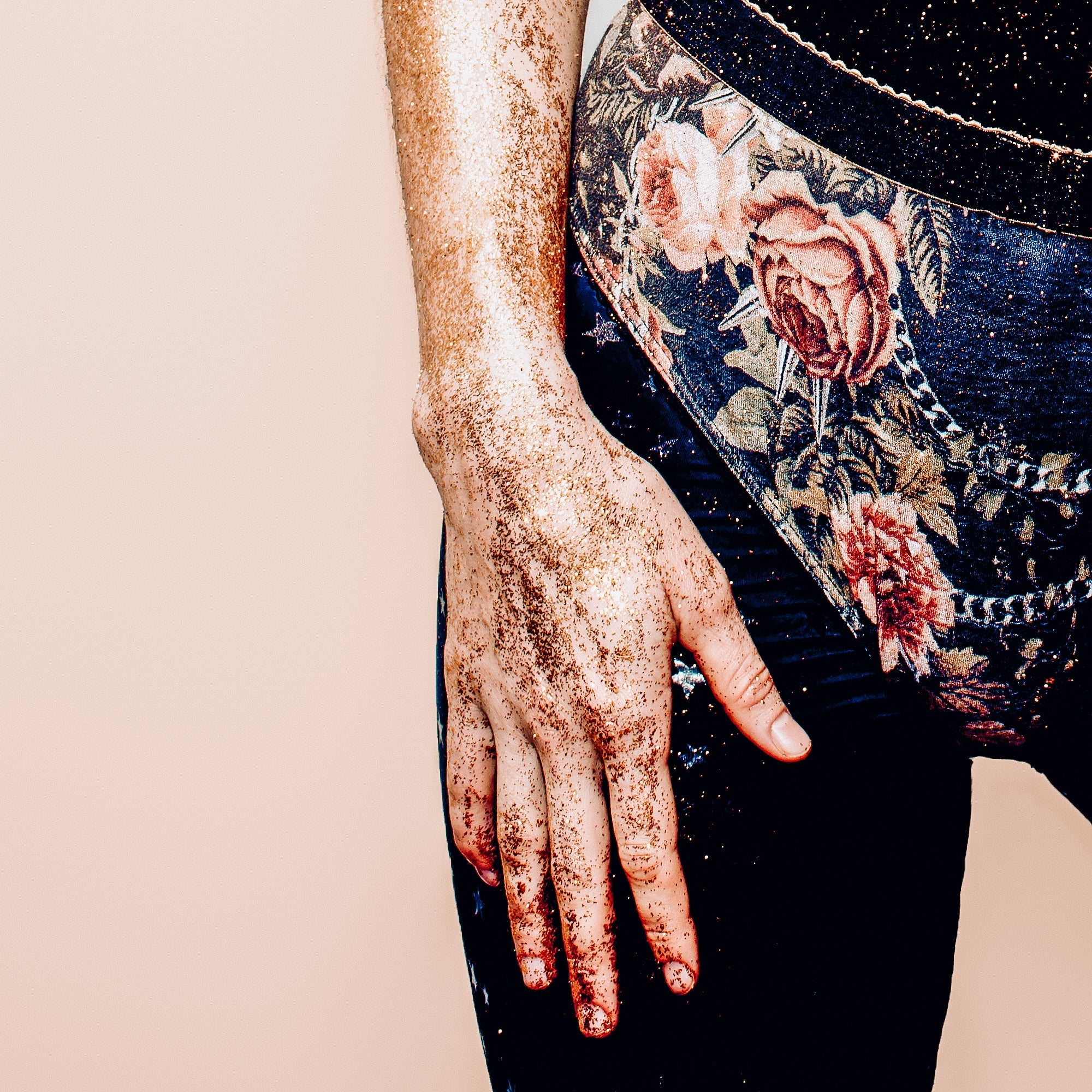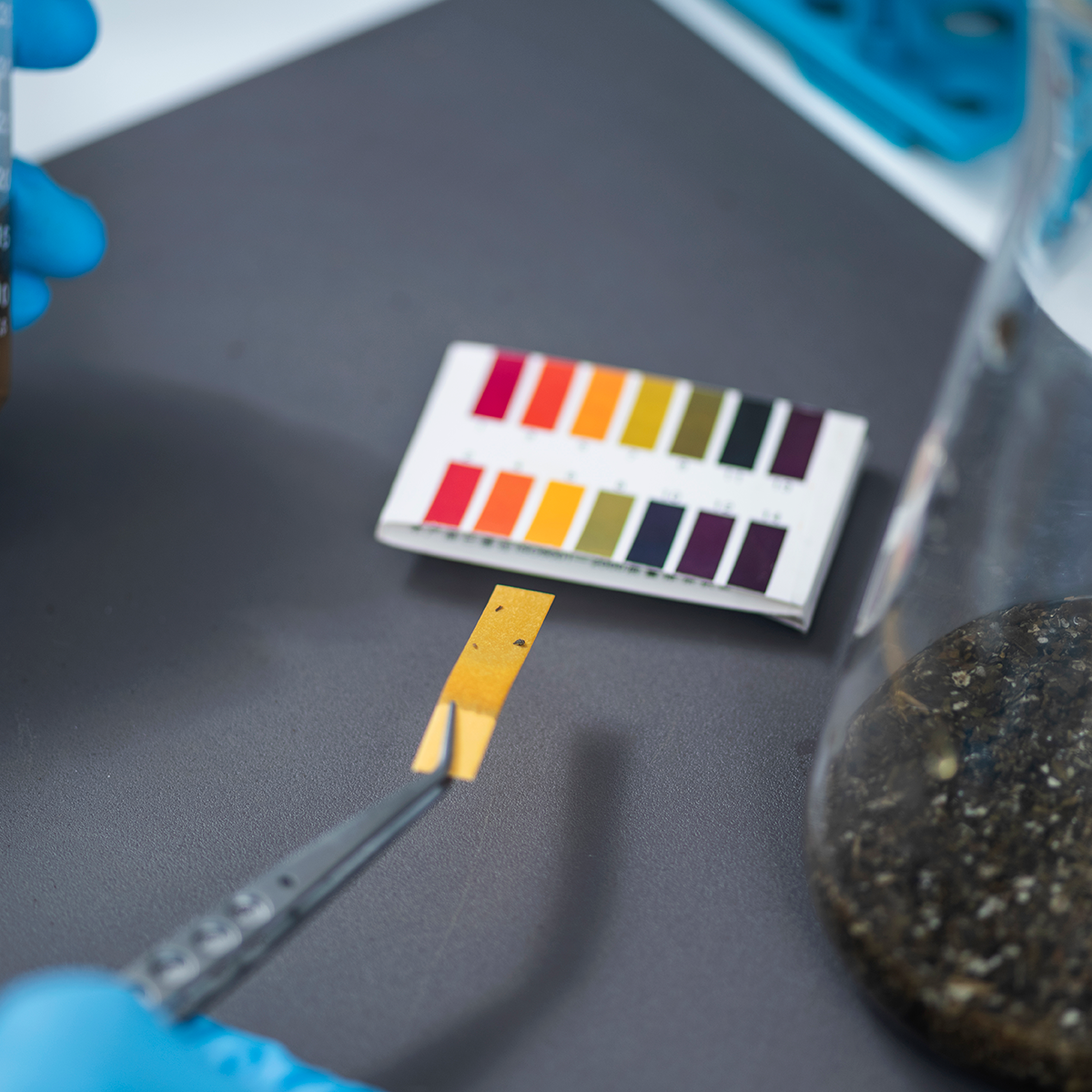13 BIOHACKS for Healthy and Glowing Skin

Having healthy and radiant skin isn’t just about the face cream you use. We’re increasingly talking about a holistic approach where gut health (Gut-Skin Axis), the endocannabinoid system (ECS), hormones, and circadian rhythm (your daily rhythm) play an equally large—if not larger—role in how your skin feels and looks. Below are 13 biohacks to help you optimize your skin’s health from the inside out. Whether you’re completely new to this or already a dedicated skin enthusiast, these tips can elevate your skincare routine to a new level.
The Skin as a Mirror of Internal Balance
The skin is the body’s largest organ and sometimes seems to have a life of its own: one day it’s smooth and hydrated, the next it flares up with redness, pimples, or eczema. But research shows that the skin is deeply connected to other systems in the body—everything from how your gut flora is doing to how you manage stress and sleep at night.
Among the most exciting discoveries is that our endocannabinoid system (ECS)—a biological system that helps regulate homeostasis—is also present in the skin. The ECS can influence everything from inflammation and sebum production to how well the skin protects itself from external stressors. By combining this insight with knowledge about how circadian rhythm, hormones, and gut flora interact, you can create a strategic, holistic plan for better skin health.
The 13 biohacks below are meant as inspiration: you can adjust their length and scope based on your personal needs and daily life. The key is to view the body as an ecosystem where everything is interconnected.
1. Biohack: Optimize Gut Flora with Prebiotics and Probiotics
Why?
A balanced gut flora (microbiota) is essential for healthy skin. Studies have shown that conditions like acne, eczema, and rosacea are often linked to an imbalanced gut flora, known as dysbiosis. When the gut is out of balance, inflammatory substances can leak into the bloodstream and trigger skin inflammation. That’s why the gut is sometimes called the skin’s mirror: if the gut isn’t doing well, it often shows on the skin’s surface.
How?
1. Prebiotics: Increase the amount of fiber and resistant starch in your diet. This includes legumes (lentils, beans), vegetables, root vegetables, and whole grains like oats.
2. Probiotics: Fermented foods such as sauerkraut, kombucha, and kefir contain live bacterial cultures that can strengthen your microbiome. If these aren’t available in your diet, you can supplement with probiotic products.
3. Be cautious with antibiotics: Antibiotics can be life-saving, but they also wipe out many of the good bacteria in your gut. After a course, make sure to rebuild your gut flora with extra prebiotics and probiotics.
Analogy: Think of your gut flora as a garden. If you water and fertilize it regularly with the right nutrients, it will flourish. But if you neglect it, weeds (harmful bacteria) can take over, which eventually shows on your skin as inflammation, pimples, or other issues.
2. Biohack: Intermittent Fasting (IF) for Cell Repair and Balanced Hormones
Why?
Intermittent fasting (IF) involves limiting your eating window during the day or week. This time-restricted eating has been shown to promote autophagy, a self-cleaning process where old and damaged cells are broken down and recycled. This can positively affect skin aging and inflammation. Additionally, IF often helps balance blood sugar and insulin levels, which can have a calming effect on sebum production in the skin.
How?
1. 16:8 Method: Eat within an eight-hour window and fast for sixteen. For example, eat between 12:00 p.m. and 8:00 p.m., then fast until lunch the next day.
2. 5:2 Method: Eat normally five days a week. On two non-consecutive days (e.g., Monday and Thursday), significantly reduce your calorie intake.
3. Listen to your body: Start gently if you’re new to fasting. Notice how you feel during the fast and adjust the duration as needed.
Tip: Many people find that bloating, stomach issues, and skin problems like acne improve with IF. However, it’s crucial that the nutritional quality of your meals remains high. Your body needs vitamins, minerals, and macronutrients to repair the skin and keep inflammation at bay.
3. Biohack: Anti-Inflammatory Diet (Omega-3, Herbs, and Antioxidants)
Why?
Inflammation is a key factor in all types of skin issues. Whether it’s mild redness, severe eczema, or chronic acne, there’s usually an inflammatory process at play. Eating foods that reduce inflammation can help keep your skin balanced.
How?
1. Omega-3: Fatty fish like salmon and mackerel, or plant-based sources like chia seeds, flaxseeds, and walnuts, help lower inflammation in the body.
2. Colorful vegetables: Red peppers, blueberries, spinach, and other leafy greens are packed with antioxidants that neutralize free radicals.
3. Powerful herbs and spices: Turmeric (ideally combined with black pepper for better absorption) and ginger are known for their anti-inflammatory properties.
Analogy: If you run a car on poor fuel, you risk overheating and damage. The same applies to your body: junk food fuels inflammation, while high-quality, nutrient-dense food keeps everything in check.
4. Biohack: Stress Management—Calm Your Nervous System and ECS
Why?
Stress is almost unavoidable in today’s society, but prolonged stress with elevated cortisol levels affects both gut health and the skin’s immune system. The gut flora suffers, and the endocannabinoid system (ECS) can become imbalanced, leading to increased inflammatory responses. The result? Acne, redness, eczema, and heightened sensitivity.
How?
1. Meditation or breathing exercises: The 4-7-8 technique is popular and simple. Inhale for 4 seconds, hold for 7 seconds, exhale for 8 seconds, and repeat.
2. Yoga, qigong, and nature walks: These activities calm the nervous system and lower stress hormones. Regularly releasing stress is vital for skin health.
3. Scheduled recovery: Plan days or moments with no obligations. A stress-free day now and then can do wonders for both body and skin.
ECS Connection: When stress levels drop, the ECS can more easily regulate inflammation and sebum production. Over time, this can lead to more balanced skin with less redness and fewer breakouts.
5. Biohack: Sleep and Circadian Rhythm—Skin’s Nightly Repair
Why?
During deep sleep, the body’s repair processes kick in, including skin renewal. Hormones like growth hormone are released more, helping to repair damage to skin cells. Additionally, cortisol levels drop, counteracting stress-related skin issues.
How?
1. Create an evening routine: Turn off screens at least an hour before bed. Read a book, listen to calm music, or meditate to unwind.
2. Sleep 7–9 hours: It’s during sleep that the body repairs itself, including the skin’s collagen and elastin.
3. Avoid light pollution: Blackout curtains or an eye mask help the body produce melatonin, which improves sleep and has antioxidant effects.
Analogy: Skin cells are like a night-shift repair crew at a factory. If they don’t get enough time and peace in the dark, the job gets sloppy, and you wake up with dull or irritated skin.
6. Biohack: Cold Exposure—Activate Brown Fat and Boost Circulation
Why?
Cold baths or showers have become an increasingly popular biohack in recent years. Cold exposure increases the release of norepinephrine and other neurotransmitters that can have anti-inflammatory effects. Additionally, blood circulation improves as the body first constricts blood vessels in the cold and then warms up again.
How?
1. Cold finish: After a regular warm shower, end with 30 seconds of cold water. Gradually increase the time as you get comfortable.
2. Ice baths: For the experienced: immerse yourself in an ice bath for 1–2 minutes. Focus on breathing calmly and steadily to keep your body centered.
3. Listen to your body: Start slowly. People with certain heart or vascular conditions should consult a doctor before trying cold exposure.
Tip: Some notice that cold exposure gives the skin a tighter feel and temporarily reduces the visibility of pores. However, be careful not to shock your body too intensely.
7. Biohack: Red and Infrared Light Therapy (RLT/IRL)
Why?
Red and infrared light (RLT/IRL) have been shown in several studies to stimulate collagen production in the skin, reduce inflammation, and accelerate wound healing. This makes the treatment popular not only among skincare professionals but also among athletes looking to speed up muscle and joint recovery.
How?
1. LED panels at home: You can purchase portable devices to use for 10–20 minutes daily. Position yourself at the recommended distance according to the manufacturer’s instructions.
2. Professional treatments: Many clinics offer more powerful light therapies that penetrate deeper into the skin.
3. Combine with skincare: For example, use a serum with antioxidants before or after light therapy to maximize the effect.
ECS Connection: Newer theories suggest that reducing oxidative stress through red light can support a more balanced ECS, as less overall inflammation gives the ECS better conditions to function.
8. Biohack: Minimize Blue Light and Digital Stress on the Skin
Why?
Screens like phones, computers, and tablets emit blue light (HEV light), which can disrupt the body’s melatonin production and thus impair sleep quality. Sleep disturbances lead to increased stress, which eventually shows on the skin. Some studies also indicate that blue light can accelerate photoaging.
How?
1. Screen filters / Night Shift mode: Many computers and phones have built-in settings to reduce blue light.
2. Screen-free evenings: Turn off electronic devices 1–2 hours before bed to give your brain a chance to produce enough melatonin.
3. Blue light-blocking glasses: If you must work late with a screen, these glasses can offer some protection.
Analogy: Blue light is like digital daylight. When the brain thinks it’s daytime, it struggles to feel naturally tired, depriving the skin of its nighttime repair hours.
9. Biohack: Minimalist Skincare—Less Is More for the Skin Barrier
Why?
Many skincare enthusiasts add more and more products, from retinols and acids to various serums and sheet masks. But overuse of active ingredients can irritate the skin and disrupt its microbiome, as well as the ECS active in the skin. When the barrier is damaged, the skin becomes more susceptible to inflammation, redness, and breakouts.
How?
1. Use only skincare with skin-identical ingredients: These are substances naturally found in the skin.
2. Add cannabinoids to skincare: They directly support the skin’s endocannabinoid system.
3. Avoid over-exfoliating and/or over-cleansing: This disrupts the skin’s ecosystem.
Tip: Think of the skin’s microbiome as a protective wall of good bacteria. Every aggressive product risks breaking down this wall and paving the way for irritation.
10. Biohack: Supplements with Collagen, Amino Acids, and Vitamins
Why?
Collagen is one of the skin’s most important building blocks. As collagen levels decrease with age, the skin loses elasticity and moisture retention, leading to wrinkles, dryness, and other signs of aging. By supplying collagen and other essential nutrients, you can help the skin maintain its firmness.
How?
1. Collagen powder or capsules: Choose a high-quality product, preferably with hydrolyzed collagen for better absorption.
2. Amino acids: L-proline, L-lysine, and glycine are particularly important for collagen production.
3. Vitamins and minerals: Vitamin A (retinol), Vitamin C, Vitamin D, and zinc are all involved in the skin’s structure and maintenance.
Remember: Supplements don’t replace a varied diet but can serve as an extra boost if your nutrition isn’t always optimal.
11. Biohack: Adaptogens and Herbs for Hormone and Stress Balance
Why?
Adaptogens are herbs and mushrooms like ashwagandha, reishi, rhodiola, and holy basil (tulsi), which are said to help the body adapt to stress and stabilize hormone levels. Many people find that their mood and energy become more stable, and over time, this can also be reflected in the skin through reduced inflammation and fewer stress-related breakouts.
How?
1. Infusions, teas, or powders: Drink ashwagandha tea in the evening to unwind or mix reishi powder into a morning smoothie.
2. Supplements: Many adaptogens are available in capsule form. Follow dosage instructions and choose organic, quality-certified products.
3. Consult an expert: If you’re on medication or have known hormonal issues, it’s wise to check with a doctor before experimenting with adaptogens.
ECS Connection: When the body is less stressed and hormones are more balanced, it becomes easier for the ECS to regulate inflammation levels and sebum production in the skin.
12. Biohack: Breathing Techniques and Mindfulness for Skin Glow
Why?
Deep, calm breathing improves blood oxygenation, providing skin cells with more nutrients and better cell renewal. Additionally, mindfulness and focused breathing exercises lower stress levels, benefiting both gut health and skin.
How?
1. Pranayama (yogic breathing): Try alternate nostril breathing (Nadi Shodhana). Close the right nostril, inhale through the left, switch sides, and exhale through the right. Repeat several times.
2. Box breathing or 4x4: Inhale for 4 seconds, hold for 4 seconds, exhale for 4 seconds, hold for 4 seconds. Repeat for a few minutes and feel your pulse slow.
3. Daily mindfulness: Set aside 5–10 minutes to focus solely on your breathing or do a simple body scan.
Analogy: Think of a wilted plant regaining its vitality with the right amount of water and oxygen. The same happens to your skin when you get enough oxygen, reduce stress, and optimize blood circulation.
13. Biohack: (Legal) Use of Cannabinoid Substances
Why?
CBD and other non-psychoactive cannabinoids have shown anti-inflammatory and calming effects on the skin. This likely occurs through interaction with the ECS, where cannabinoids can help modulate immune responses and reduce overproduction of sebum.
How?
1. CBD oil or capsules: If legal where you live, use these as dietary supplements. Choose high-quality products with clear ingredient labels.
2. Topical preparations: CBD creams, ointments, or serums applied to local problem areas (like eczema or acne-prone skin) can provide relief.
3. Check the legislation: Regulations around cannabinoid substances vary widely. Ensure the product is tested for purity and doesn’t contain illegal levels of psychoactive substances (THC).
Tip: The ECS is one of the body’s main regulators. Supporting the ECS can often calm unnecessary inflammation and help the skin resist external stressors.
Balance Is Everything
These biohacks aren’t quick fixes on their own. They work best together. It’s not enough to just take collagen powder if you’re simultaneously sleeping three hours a night and constantly stressed. Your skin reflects your internal state—if your body is doing well, it often shows on your face.
Holistic Approach
It’s easy to become obsessed with a single product or method. But balanced skin comes from a holistic view: a nutrient-rich diet, good sleep, effective stress management, and a moderate amount of skincare products. Try to step back and see how different factors in your life might be affecting your skin.
Be Attentive
No two bodies are alike. Biohacking is fundamentally about experimenting and listening inward. Maybe you’ll notice that cold exposure gives you fantastic results, or that a diet with more Omega-3 gives your skin an extra glow. Take one thing at a time and evaluate. Consider keeping a journal or tracking results in your own way—it’s a journey where you get to know your body on a new level.
### References
1. **Gut-Skin Axis**
- Salem, I., et al. The Gut Microbiome as a Major Player in Chronic Inflammatory Diseases. Nutrients, 2018.
- Zhao, G., et al. Gut–Brain–Skin Axis and the Microbiome. Frontiers in Microbiology, 2020.
2. **Endocannabinoid System (ECS)**
- Maccarrone, M., et al. Endocannabinoid Signaling in the Skin. Progress in Lipid Research, 2018.
- Baswan, S. M., et al. Therapeutic Potential of Cannabidiol (CBD) for Skin Health and Disorders. Clinical, Cosmetic and Investigational Dermatology, 2020.
3. **Intermittent Fasting**
- Mattson, M. P., et al. Meal Frequency and Timing in Health and Disease. Proceedings of the National Academy of Sciences, 2014.
4. **Omega-3 and Anti-Inflammatory Diet**
- Calder, P. C. Omega-3 Polyunsaturated Fatty Acids and Inflammatory Processes. Nutrition, 2013.
- Kar, S., et al. Anti-Inflammatory Diet and Its Effect on Skin Health. Nutrients, 2021.
5. **Stress and the Skin**
- Arck, P., et al. Stress and the Skin: From Basic Science to Clinical Aspects. Experimental Dermatology, 2006.
- Bowers, B., et al. Stress and its Impact on Skin Barrier Function. Skin Therapy Letter, 2021.
6. **Sleep and Circadian Rhythm**
- Hardeland, R. Melatonin and Circadian Rhythms. Neuroendocrinology, 2017.
- Baron, K. G., et al. Sleep and Skin Health. Sleep Medicine Clinics, 2015.
7. **Cold Exposure**
- Tipton, M. J., et al. Cold Water Immersion: Kill or Cure?. Experimental Physiology, 2017.
8. **Red Light (RLT) and Infrared Light (IRL)**
- Avci, P., et al. Low-Level Laser (Light) Therapy (LLLT) in Skin: Stimulating, Healing, Restoring. Seminars in Cutaneous Medicine and Surgery, 2013.
9. **Blue Light and Skin**
- Nakashima, Y., et al. Blue Light Induces Oxidative Stress in Human Skin. Journal of Investigative Dermatology, 2017.
10. **Minimalist Skincare**
- Dréno, B., et al. Cutaneous Microbiome and Topical Treatments. American Journal of Clinical Dermatology, 2019.
11. **Collagen and Supplements**
- Zague, V. A New View Concerning the Effects of Collagen Hydrolysate Intake on Skin Properties. Archives of Dermatological Research, 2008.
12. **Adaptogens**
- Panossian, A., et al. Adaptogens in Stress Management: Pharmacology and Benefits. Current Clinical Pharmacology, 2018.
13. **Mindfulness and Breathing**
- Black, D. S., et al. Mindfulness Meditation and the Immune System: A Systematic Review of Randomized Controlled Trials. Annals of the New York Academy of Sciences, 2016.
By integrating one or more of these biohacks into your daily routine, you can gradually improve your skin’s health and appearance. The most important thing is to listen to your body, adapt the strategies to your unique lifestyle, and not give up if results take time. Skin cell turnover takes time, but with a holistic approach, you can notice a significant difference in how your skin feels and looks, both in the short and long term. Good luck!




Comments